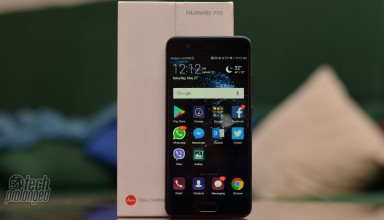Leica Dual Camera - Introduction

Leica Dual Camera 2.0
The dual-camera setup is a combination of a 12 megapixels color/RGB sensor and a 20 megapixels monochrome sensor. The module has Leica optics and both lenses have f/2.2 aperture. The configuration works like before – the system uses monochrome image data for better image detail, higher dynamic range as well as reduced noise levels.
Huawei P10 also has laser autofocus to assist the sensor based phase detect AF. This time, there’s optical image stabilization that works with the color sensor to provide steady video footage as well as better low-light shots with a longer exposure. Technically with system settings, the OIS is set to go as slow as 1/17th of a second, however you can manually go further down to 30 secs if you have enough steady hands or you want to use a tripod.
In video mode, Huawei P10 offers up to 4K (UHD) recording as well as 1080p/60fps is also an option. The software based stabilizer is also present for videos up to 1080p/30fps.
Camera Operations
Huawei P10’s native camera app has not changed a lot as compared to the predecessor P9. Some cosmetic changes are present but it got a plenty of quick toggles right along side the viewfinder. In addition to “Wide Aperture” (formerly Aperture Mode), a new Portrait Mode detects faces and create an artistic bokeh on the background.
A virtual shutter button is on one side with the gallery and video switches while on the other hand there’s a set of toggles – front/rear camera switch, filter options, color settings, Portrait mode, Wide aperture mode, and flash settings.
From the right side, pull out the “PRO” settings which allows you to configure metering, ISO, shutter speed, exposure compensation, manual focus and white balance. All those settings can be adjusted through a virtual slider.
Taping on the screen focuses the subject as well provides provide option to set exposure for a certain lightning condition. A virtual slider is provided along side the focus point (the focus circle) to manually adjust the exposure compensation.
With all those quick access features, the Huawei’s camera UI is more intuitive than what has recently been offered by competitors. This interface is equally useful for both, a standard user or a more professional enthusiastic.
Swiping right on the viewfinder brings a lot of camera modes including Monochrome, HDR, Panorama, Night Shot, Time-Lapse, Slo-mo and more. Right on the mode screen you can see an ¡ (information) icon which explains each of the mode in detail. Swiping left reveals the settings which are dependent on the mode you are currently in.
You can set to take 20MP large color photos but 2x lossless zoom is only available when capturing 12MP shots. You can go additionally up to 10x zoom but that will be common digital zoom.










